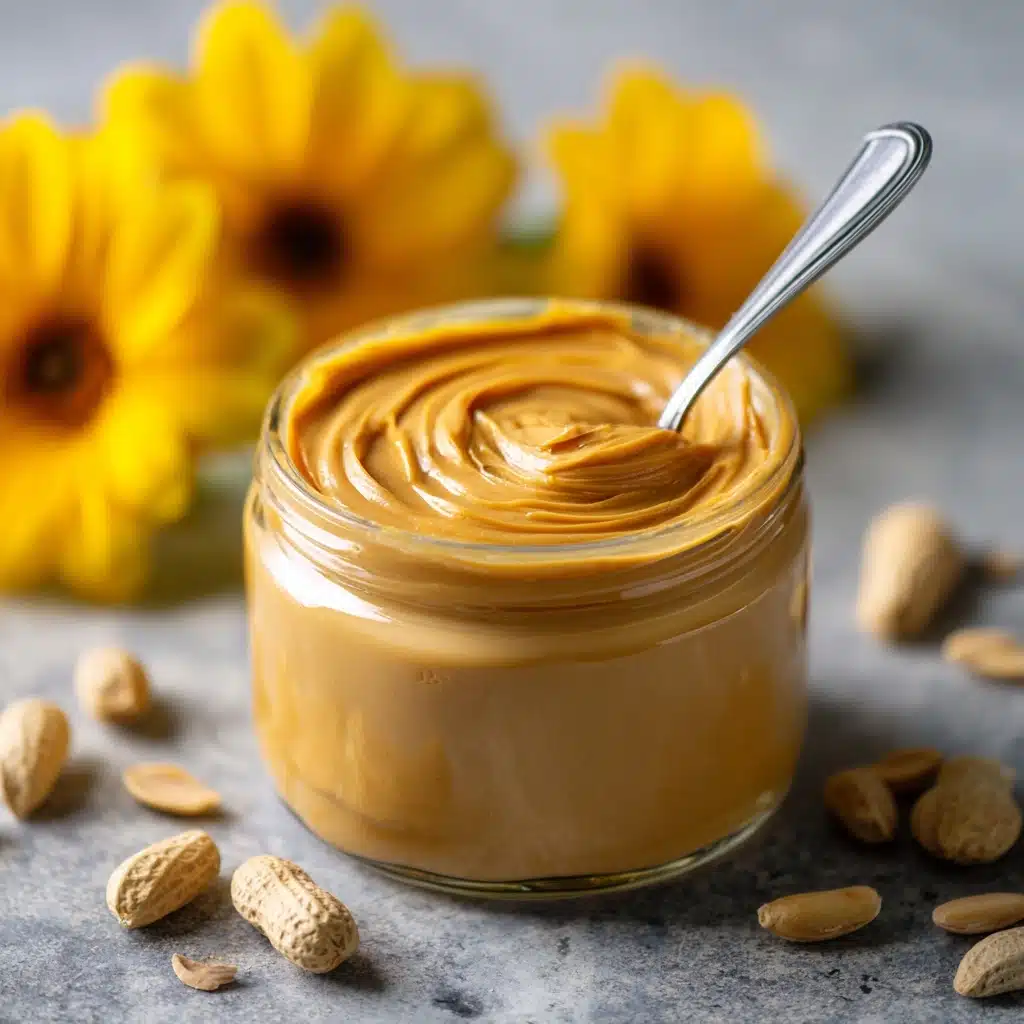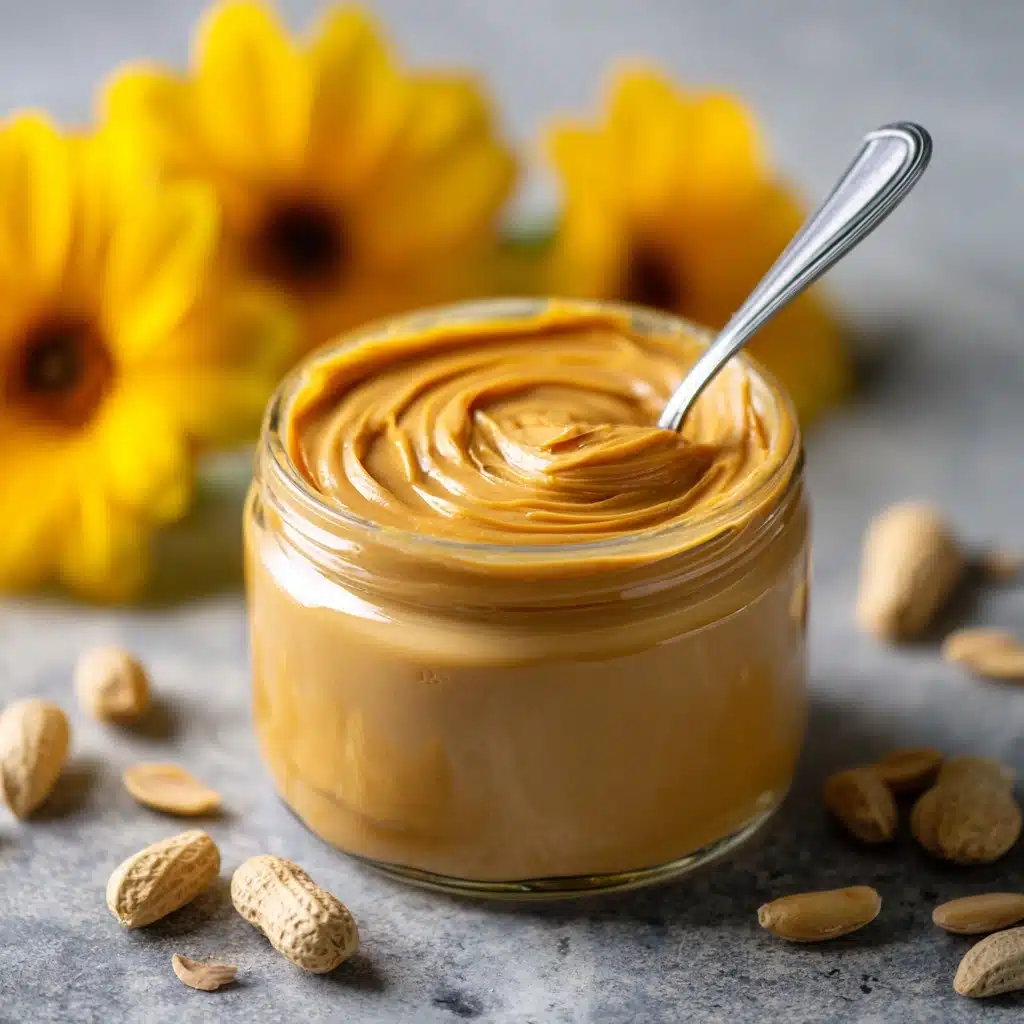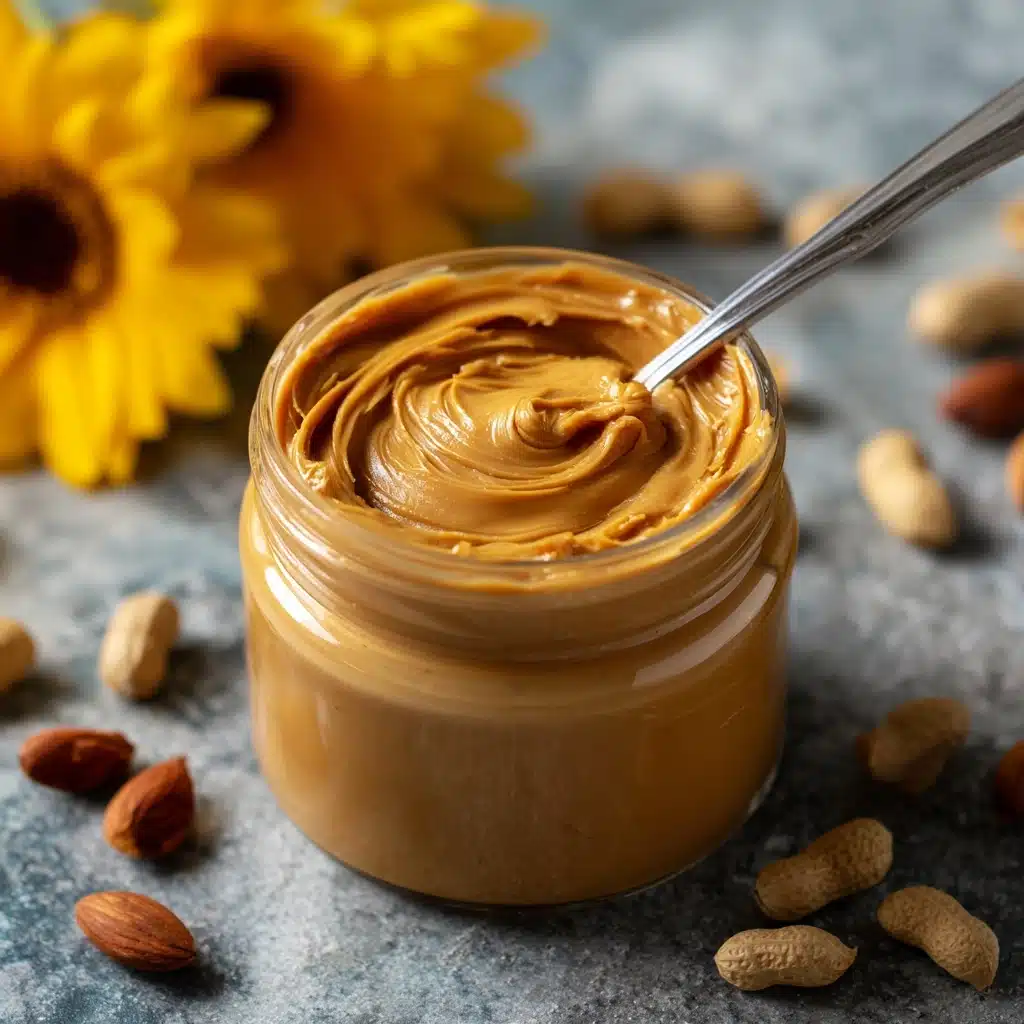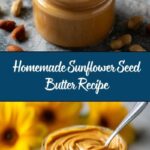Looking for something creamy, nutty, and totally allergy-friendly? This Sunflower Seed Butter is pure homemade magic—velvety, naturally nut-free, and loaded with flavor from freshly roasted seeds. Whether you slather it on toast, swirl it into oatmeal, or dollop it on fruit, this spread delivers all the satisfaction of classic nut butters, in a way that’s gluten-free, dairy-free, and perfect for sharing. Dive in and discover why Sunflower Seed Butter just might become your new pantry superstar!
Ingredients You’ll Need
Sunflower Seed Butter is delightfully simple to make, and each ingredient here plays a starring role. From the deep, golden flavor of roasted seeds to the pinch of salt and hint of sweet, every addition brings out the best characteristics of the spread—creamy texture, rich color, and crave-worthy taste.
- Raw sunflower seeds: These are the heart and soul of the recipe—the source of that smooth, nutty character and toasty depth when roasted.
- Neutral oil (such as sunflower or grapeseed oil): Just a touch helps your Sunflower Seed Butter blend up creamy and smooth, without overpowering the natural seed flavor.
- Salt: A little goes a long way to brighten and balance, enhancing the irresistible savory notes of the butter.
- Honey or maple syrup (optional): For those who like a hint of sweetness, either can add a subtle floral note and round out the flavor.
- Cinnamon (optional): A sprinkle gives your Sunflower Seed Butter a cozy, aromatic twist that pairs beautifully with breakfast and snacks.
How to Make Sunflower Seed Butter
Step 1: Roast the Sunflower Seeds
Preheat your oven to 350°F (175°C). Spread your sunflower seeds in a single, even layer across a baking sheet—this way, each seed gets properly toasted. Slide them into the oven and roast for about 10–12 minutes, giving them a good stir halfway through so they color evenly. When they smell undeniably fragrant and look lightly golden, you’re set!
Step 2: Cool and Prepare for Blending
Let the roasted seeds cool for a few minutes; blending them while they’re slightly warm helps speed up the process and creates an ultra-silky texture. Just don’t add them in blazing hot—you want gentle heat, not steam in your food processor.
Step 3: Process Until Crumbly and Smooth
Pour the cooled seeds into your food processor and run it for 1–2 minutes. At first, you’ll see a crumbly meal form. Pause and scrape down the sides with a spatula. Continue blending in intervals, scraping as needed, for up to 5–8 minutes. The mixture will suddenly transform—from dry and clumpy into a mesmerizingly smooth, creamy Sunflower Seed Butter!
Step 4: Add Oil and Flavorings
If the blend feels thick or struggles to turn creamy, drizzle in your neutral oil one tablespoon at a time. Process until just right. Now’s the time to sprinkle in your salt, and blend again. For extra fun, add a swirl of honey or maple syrup, and a pinch of cinnamon if you like a flavor twist—blend again until everything is fully incorporated.
Step 5: Taste and Adjust
Give your Sunflower Seed Butter a little taste! Does it need a pinch more salt, or a touch more sweet? Play around until it’s your perfect flavor. Remember, it will thicken as it cools, so don’t worry if it’s a bit liquidy right out of the processor.
How to Serve Sunflower Seed Butter

Garnishes
For an irresistible finish, sprinkle your Sunflower Seed Butter with a few toasted sunflower seeds, a dusting of flaky salt, or a pinch of cinnamon. You can even add a tiny drizzle of extra honey or maple syrup for gloss and sweetness—this adds charm for both taste and presentation!
Side Dishes
Spread Sunflower Seed Butter on hearty whole grain toast, apple slices, or banana halves for a satisfying breakfast or snack. It’s also fantastic stirred into warm oatmeal, or even as a creamy swirl atop pancakes or waffles, thanks to its velvety texture and earthy depth.
Creative Ways to Present
Love to get a little fancy? Swirl Sunflower Seed Butter on smoothie bowls, use it as a dip for crispy baked sweet potatoes, or fold it into energy bites. Try layering it on rice cakes with fresh berries, or sandwich it between cookies for a nut-free treat that delights everyone.
Make Ahead and Storage
Storing Leftovers
Keep your Sunflower Seed Butter sealed in an airtight jar, and it’ll stay fresh at room temperature for up to a week. For longer shelf life, pop it in the refrigerator, where it stays delicious for up to a month. Just remember to give it a stir if it separates—a quick mix brings it right back to creamy perfection.
Freezing
Want to make a big batch? Sunflower Seed Butter freezes beautifully! Transfer any extra to a freezer-safe container, leaving a little space for expansion. Thaw overnight in the fridge when you’re ready to use—it’ll retain its texture and rich flavor.
Reheating
If your refrigerated or thawed Sunflower Seed Butter is too thick to spread, gently warm it in the microwave for 10–15 seconds, or set the jar in a bowl of warm water. This will loosen it back up, so it’s smooth and spreadable in no time.
FAQs
Is Sunflower Seed Butter safe for people with nut allergies?
Absolutely! Sunflower Seed Butter is completely nut-free, making it a wonderful alternative for anyone avoiding nuts due to allergies or dietary preferences. Just be sure to check your ingredient labels for cross-contamination warnings if allergies are severe.
Can I make Sunflower Seed Butter without any added oil?
You can! If you roast the seeds well and let the food processor run long enough, the natural oils from the seeds will release, resulting in a creamy spread. The added oil simply speeds up the process and can create a silkier finish.
How can I make my Sunflower Seed Butter sweeter without honey?
For a vegan version, maple syrup is a fantastic swap. You can also try a bit of coconut sugar or even a medjool date blended in for natural sweetness with extra depth and no refined sugar.
Why does my Sunflower Seed Butter sometimes look green?
Not to worry—sunflower seeds naturally contain chlorophyll, which can react with baking soda or alkaline ingredients in certain baked goods, turning them green. It’s completely harmless and safe to eat!
What recipes can I use Sunflower Seed Butter in?
Use Sunflower Seed Butter anywhere you might use peanut or almond butter: in sandwiches, cookies, energy balls, smoothies, sauces for noodles, or even as a dip for fruit. Its toasty, nutty flavor is endlessly adaptable!
Final Thoughts
I hope you’re as excited to try making Sunflower Seed Butter as I am to share it with you. There’s something truly special about crafting this creamy, allergy-friendly staple at home; it’s a little kitchen project that pays off with every glorious spoonful. Give it a whirl—you might just find it’s your new favorite spread!
PrintSunflower Seed Butter Recipe
Learn how to make delicious homemade Sunflower Seed Butter with this easy recipe. It’s creamy, flavorful, and perfect for those with nut allergies.
- Prep Time: 5 minutes
- Cook Time: 12 minutes
- Total Time: 17 minutes
- Yield: 1 cup 1x
- Category: Condiment
- Method: Blending
- Cuisine: American
- Diet: Vegan
Ingredients
Sunflower Seed Butter:
- 2 cups raw sunflower seeds
- 1–2 tablespoons neutral oil (such as sunflower or grapeseed oil)
- 1/4 teaspoon salt (adjust to taste)
- 1–2 teaspoons honey or maple syrup (optional)
- 1/2 teaspoon cinnamon (optional)
Instructions
- Preheat the Oven: Preheat the oven to 350°F (175°C) and spread the sunflower seeds on a baking sheet. Roast for 10–12 minutes, stirring once, until golden and fragrant.
- Blend Seeds: Let seeds cool slightly, then transfer to a food processor. Blend for 1–2 minutes until crumbly. Scrape down the sides and continue blending until smooth, about 5–8 minutes total.
- Add Flavor: Add oil, salt, and honey or cinnamon for sweetness. Blend until fully incorporated.
Notes
- Sunflower seed butter thickens as it cools.
- Store in an airtight jar at room temperature for up to 1 week or in the fridge for up to a month.
- Stir before using if it separates.
Nutrition
- Serving Size: 2 tablespoons
- Calories: 180
- Sugar: 1g
- Sodium: 50mg
- Fat: 16g
- Saturated Fat: 1.5g
- Unsaturated Fat: 13g
- Trans Fat: 0g
- Carbohydrates: 6g
- Fiber: 2g
- Protein: 5g
- Cholesterol: 0mg




